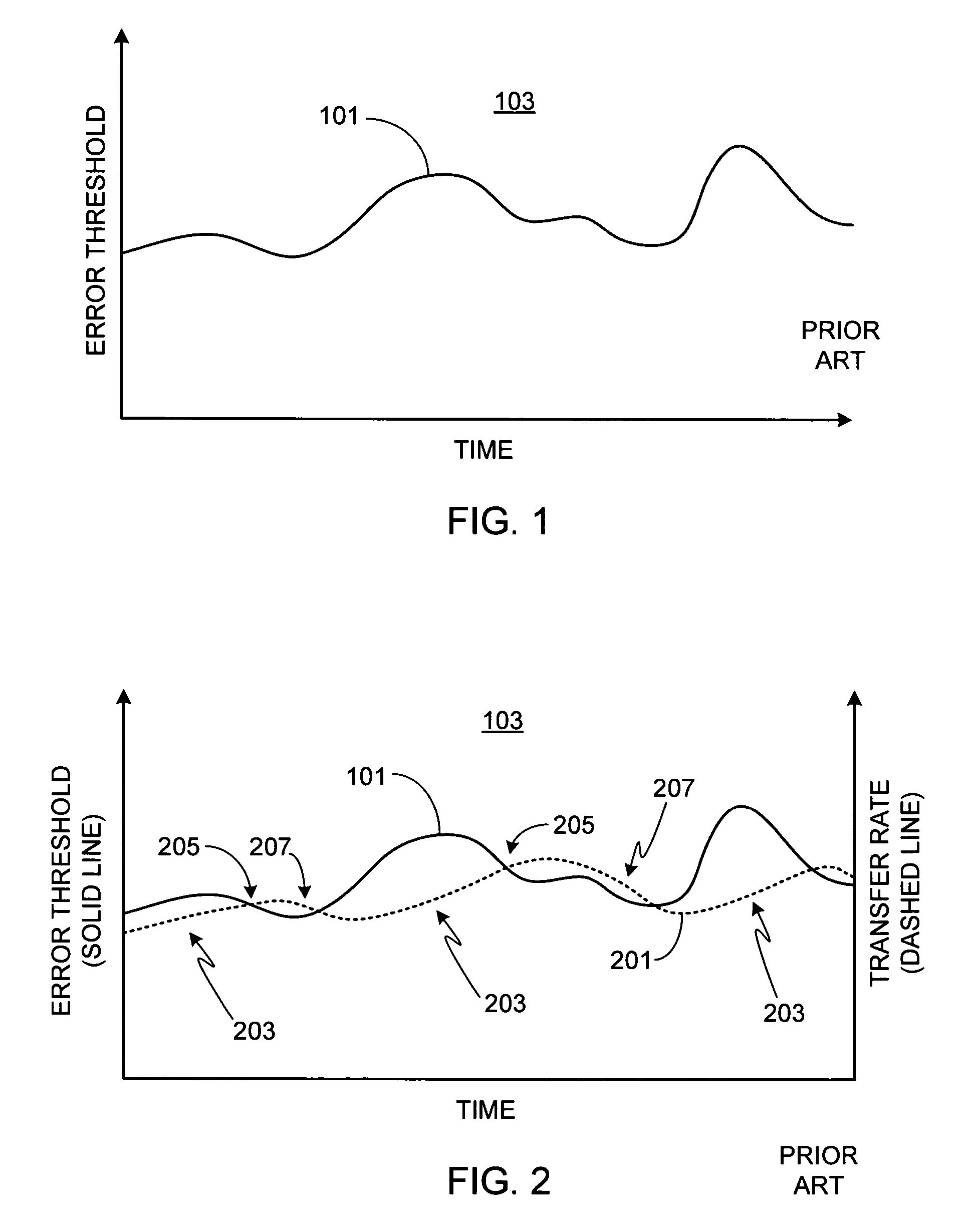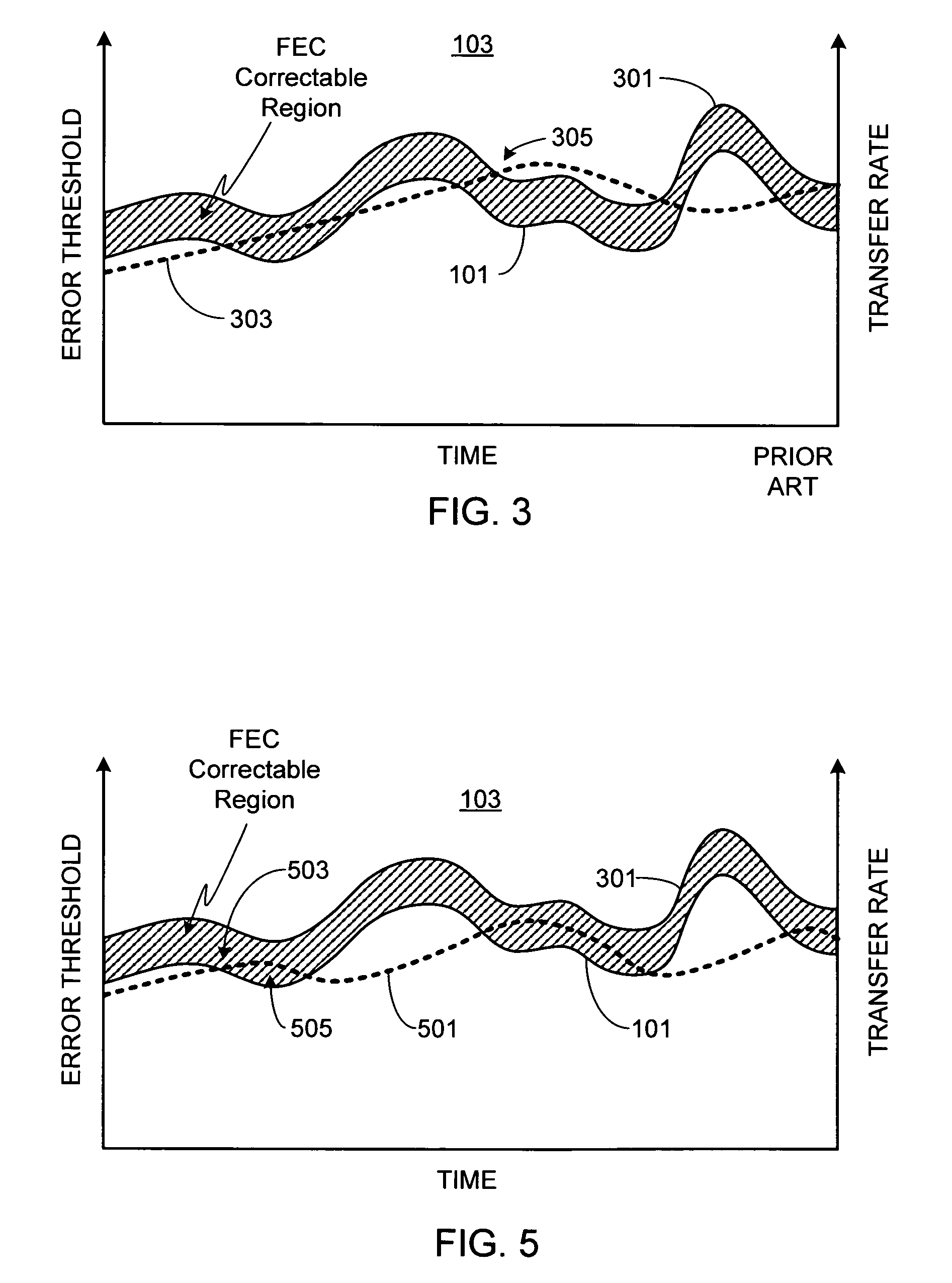Adaptive information delivery system using FEC feedback
- Summary
- Abstract
- Description
- Claims
- Application Information
AI Technical Summary
Benefits of technology
Problems solved by technology
Method used
Image
Examples
Embodiment Construction
[0033] Data channels are subject to errors arising from a variety of time-varying sources such as external noise or interference, router congestion, link congestion, etc., all of which lead to a time varying error rate associated with the channel. This time varying error rate controls the allowable data transfer rate of the channel. If the rate of data transfer over the channel is low enough, the data can be transferred error-free. As the transfer rate over the channel is increased, however, eventually the rate will be high enough that the error characteristics of the channel will cause data to be corrupted or lost. Thus the error rate of the channel establishes an error threshold.
[0034]FIG. 1 graphically illustrates the concept of an error threshold (i.e., line 101). As shown, the error threshold varies with time. As long as the transfer rate remains below error threshold 101, the data transfer is error-free. Each time the transfer rate exceeds threshold 101, passing into zone 103...
PUM
 Login to View More
Login to View More Abstract
Description
Claims
Application Information
 Login to View More
Login to View More - R&D
- Intellectual Property
- Life Sciences
- Materials
- Tech Scout
- Unparalleled Data Quality
- Higher Quality Content
- 60% Fewer Hallucinations
Browse by: Latest US Patents, China's latest patents, Technical Efficacy Thesaurus, Application Domain, Technology Topic, Popular Technical Reports.
© 2025 PatSnap. All rights reserved.Legal|Privacy policy|Modern Slavery Act Transparency Statement|Sitemap|About US| Contact US: help@patsnap.com



